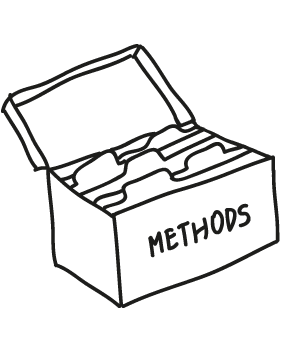
Previously, I wrote a blog post entitled: “Special Education Disputes and Comprehensive Language Testing: What Parents, Attorneys, and Advocates Need to Know“. In it, I used 4 very different scenarios to illustrate the importance of comprehensive language evaluations for children with subtle language and learning needs. Today I would like to elaborate further on that post in order to explain, what actually constitutes a good independent comprehensive language and literacy assessment.
Independent evaluations, whether educational, psychological, speech and language, etc., are typically performed with a particular purpose in mind. That purpose is not to simply document the student’s strengths and needs but also to explicitly advise on solid goals and objectives or a strong treatment plan so the child could improve abilities in the affected areas of functioning.

For example, psychological evaluations do not simply determine the child’s full-scale IQ. Depending on the breakdown of the child’s scores, they help educators with planning for the child’s educational needs. To illustrate, let’s say that IQ testing determined that the child is functioning in the below-average range with significantly lower scores in the areas of working memory and processing speed. Given this information professionals working with the child in the classroom and in the therapy room can plan accordingly in terms of designing an appropriate intervention that takes into consideration the child’s cognitive challenges.

Similarly, let’s say an educational/learning testing had determined that the child exhibits difficulties in the areas of phonics, word reading, reading fluency, etc. Such information is hugely helpful in assisting the child to receive additional reading intervention services with a focus on improving the affected areas of difficulty.
In other words, it is not nearly enough to state in the body of the report, what is wrong with the child, rather it is important to make functional recommendations on what can be done with a child in order to make the child better.
Now here it is very important to understand that accommodations and modifications, while extremely helpful for all children with learning needs, are simply not going to be as functional as actual targeted intervention goals in the affected areas, be it reading, writing, listening comprehension, etc.
Independent evaluations need to make concrete recommendation suggestions regarding best remediation practices for the child. They need to contain goals that other professionals can follow. Without this component, independent evaluations have highly limited value. Here is an example that illustrates the limited value of one such report.
Several years ago I was asked to do a comprehensive language and literacy evaluation on a fifth-grade student who was functionally illiterate. The student had already completed a comprehensive neuropsychological evaluation, which surprisingly enough did not draw any conclusion regarding the student’s abilities.
The neuropsychologist found that the student had an average IQ and learning difficulties across the board in numerous tested areas. Because of these findings, the neuropsychologist chose to ‘blame’ the student’s deficits on ADHD and stated that he is unable to diagnose a student with a learning disability because there were no score discrepancies on educational testing (not a scientifically backed argument).
Now, what is the value of such an assessment? This child’s parents have spent thousands of dollars on this assessment but in the end, they had absolutely nothing to show for it! The assessment had literally found nothing useful because the submission of such an assessment to the school setting would not have resulted in an altered and beneficial program placement for this child.
So what are the components of a good comprehensive independent evaluation? For the purpose of this particular question, I’ll stick to the subject of language and literacy evaluations, which are in my purview.
Here are the sections I include in a typical independent comprehensive language and literacy report for school-age clients. Make sure to click on the multicolored/highlighted words to learn more details via relevant past posts pertaining to this topic.
Formal Testing Results
- This section includes the tables of all the standardized testing administered to the child
- This section comprehensively discusses the child’s history to date. It summarizes in meticulous detail prenatal perinatal and postnatal histories, developmental milestones acquisition, relevant medical and psychiatric histories, as well as a compilation of information regarding all previous assessments and interventions to date. This is particularly important for cases involving a change in school placement. After all, if the child had received extensive interventions in a particular school setting which were found to be ineffective to date, it is a strong indication that a different school placement may be warranted.
School Visit
- This section is hugely important for the determination of the child’s functioning in school setting. It documents an observation one hour in length, preformed to determine whether the child is receiving free and appropriate education in school setting (whether the child is appropriately receiving relevant therapies/schooling).
- School Visit Impressions
- All school visits need to include a report section which discusses the observers impressions of the program, as well as their suitability to the child’s educational needs.
- School Visit Impressions
Adaptive Behavior
- This section documents the child’s social communication abilities as displayed throughout testing. Was the child calm or distractible, but did the child display any socially awkward behaviors, did the child display any refusal behaviors, was there any odd conversational exchanges, did it take the child too long to answer questions, with the child displaying any word finding difficulties when speaking? All of these observations are documented in that section as a precursor to both formal as well as clinical social communication testing (see below)
- Here any orofacial anomalies get documented if needed
Voice, Fluency, Resonance, and Prosody
- This section discusses any deviations in the above, and/or documents the presence of typical functioning as commensurate with age.
Articulation and Phonology
- Here I document the presence of typical or atypical speech patterns
- This is a section which discusses previous audiological findings, history of hearing deficits (if present), as well as overall impressions of child’s hearing throughout the assessment.
Methods of Assessment
- Parent Intakes

- Records Review
- Parent Interview
- Informal Observations
- Direct Assessment
- Discourse Analysis
- Reading Analysis
- Writing Analysis
Testing Protocols
- A list of all the formal tests used during the assessment
Language Processing and Listening Comprehension:
- Detailed findings of both formal and clinical testing pertaining to the child’s ability to process and comprehend language
Expressive Language and Metalinguistic Abilities:
- Detailed findings of both formal and clinical testing pertaining to the child’s ability to verbally express self via the effective/ineffective ability to manipulate words and sentences
- Detailed findings of clinical testing pertaining to the child’s ability to produce age level narratives
Problem Solving, Critical Thinking, and Verbal Reasoning:
- This section documents formal testing results of problem-solving testing
Social Communication Abilities
- This section documents formal as well as clinical testing results of social communication testing
- This extensive section includes the details of both formal as well as clinical reading testing including information on the child’s phonemic awareness abilities, decoding abilities, reading fluency and reading comprehension, summarization of read information, etc.
- This section contains results of formal and clinical writing assessments including spelling as well as writing composition
IMPRESSIONS
- At this juncture I am ready to summarize the results of my assessment findings in detail. Here I discuss the severity of the impairment as well as list the areas in which deficits have been noted.
ICD-10 Diagnoses
- Here I list relevant to the assessment diagnoses which were revealed by the conclusion of testing
CLASSROOM PLACEMENT RECOMMENDATIONS:
- If necessary, this section discusses recommendations for alternative classroom placement. Here I include information regarding the class size, what additional therapies the child may need to receive, the need for additional classification/services, etc.
Instructional Accommodations to Improve Information Processing
- Here I discuss my observations pertaining to accommodations which may be beneficial to the child in the school setting
ACCOMMODATIONS VS. REMEDIATION:
- Here, I discuss the importance of providing direct remediation services versus mere accommodations and modifications alone
Knowledge Retention Recommendations:
- This section may also be merited at times especially with severely impaired children who may not be able to process information presented to them in longer sentences
Adaptive Recommendations:
- This section requires what adaptive modifications with respect to the child’s physical space, session materials, etc. may be needed in order for the child to succeed
Maintaining Factors (factors contributing to the maintenance of linguistic deficits)
- Cognitive
- Sensorimotor
- Psychosocial
- Linguistic
SUGGESTED THERAPY GOALS
- As mentioned before this is a hugely important section which details the students long term as well as short-term goals which were derived based on the presence of deficit areas as documented throughout the assessment report
Reward system and rationale:
- This may be a particularly important section for students with the greater degree of impairment as here we may be able to document what type of reward/reinforcements (intrinsic/extrinsic) work to for the student to motivate him/her to complete the assessment
- If possible, an internal and social system of reward for targeted skill achievement (fostering, intrinsic motivation to take pride in own accomplishments) is strongly recommended
Goal Termination
- Here I discuss the expectations for goal termination. I typically recommend a contingency of 90% or above accuracy marker over a period of 3 consecutive sessions
Expected duration of treatment
- While it is often impossible to predict the duration of treatment, certain educated guesses may be taken to determine therapy length. This is frequently determined based on how rapidly the student progresses in therapy, the extent of parental involvement as evidenced or homework as well as carryover activities and exercises at home, any additional private therapy services as well as any additional school therapy services and support (e.g., reading instruction)

Prognosis
- Here, once again depending on the extent of severity of the students deficits, a statement of prognosis may be made (e.g., “Good but cautious due to the above maintaining factors”)
Therapy Discharge:
- Contingent on a successful reassessment of target deficit areas.
Appendices
- This is a section where I provide any pertinent to the assessment documents such as the results of the prescriptive spelling test (e.g., SPELL-2) or a synopsis of a particular narrative (e.g., Dr. De Soto by William Steig) so that assessment readers could compare the student’s narrative production with expected production
So now that you know, what sections I include in my independent comprehensive language and literacy evaluations, I’d love to know if there are other sections/areas that you including yours? Post your thoughts and suggestions in the comments section below
Related Posts:
- Special Education Disputes and Comprehensive Language Testing: What Parents, Attorneys, and Advocates Need to Know
- On the Limitations of Using Vocabulary Tests with School-Aged Students
- Updated: What Does “Their Social Skills Are Just Fine” Really Means When it Comes to Children with Language Impairment
- Why Developmental History Matters: On the Importance of Background Information in Speech-Language Assessments
- The Importance of Narrative Assessments in Speech-Language Pathology (Revised)
- Analyzing Discourse Abilities of Adolescents via Peer Conflict Resolution (PCR) tasks
- What do Auditory Memory Deficits Indicate in the Presence of Average General Language Scores?
- Analyzing Narratives of School-Aged Children
- Adolescent Assessments in Action: Informal Reading Evaluation
- Dear Reading Specialist, May I Ask You a Few Questions?
- Test Review of CELF-5 Metalinguistics: What SLPs Need to Know
- Do Our Therapy Goals Make Sense or How to Create Functional Language Intervention Targets
- Social Communication and Describing Skills: What is the Connection?
- Recommendations for Assessing Language Abilities of Verbal Children with Down Syndrome (DS)